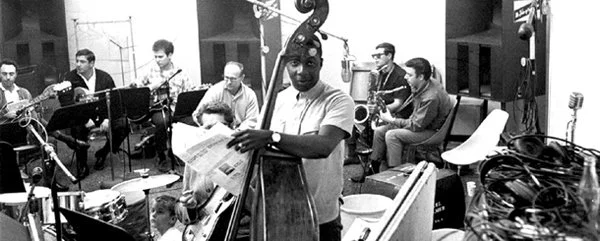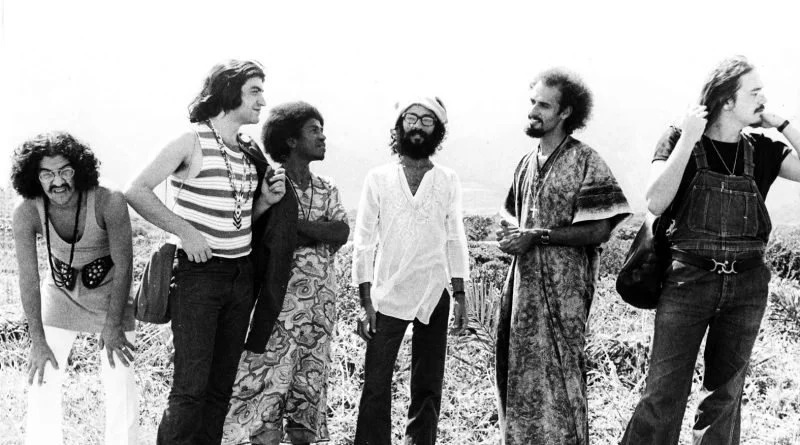THE INVISIBLE ARCHITECTS OF OUR SOUNDTRACK
Published on the Jazz Is Dead Newsletter on 09/19/2025 - Subscribe here
When you’re on the road with a legendary band you get to hear a lot of great stories, you get to connect on a personal level with these guys, and have great conversations. In one of these conversations with Kiko Continentino during the latest Azymuth North American tour, a recent list came up — the top 100 Brazilian songs from the 1970s. Kiko mentioned something that stopped me in my tracks: in more than half of those songs, at least one of the original members of Azymuth was playing. That comment opened my eyes to an overlooked truth — the music that defines entire eras often rests on the shoulders of musicians whose names don’t appear in big letters, but whose fingerprints are everywhere.
Unsung Heroes: From Detroit and Los Angeles to Rio and Belo Horizonte
In the United States, some of these collectives have become legendary. At Motown in Detroit, The Funk Brothers were the powerhouse behind Marvin Gaye, Stevie Wonder, The Supremes, and The Temptations. Their ranks included James Jamerson (bass), Benny Benjamin and Uriel Jones (drums), Earl Van Dyke (keys), and Robert White and Joe Messina (guitars). They are said to have played on more number one hits than The Beatles, Elvis, and The Rolling Stones combined.
Stevie Wonder performs with The Funk Brothers
Meanwhile in Los Angeles, The Wrecking Crew shaped the sound of West Coast pop. This loose collective included Hal Blaine (drums), Carol Kaye (bass), Tommy Tedesco (guitar), and Larry Knechtel (keys), among many others. They backed The Beach Boys, The Mamas & The Papas, Frank Sinatra, and even Phil Spector’s “Wall of Sound.” Their names were rarely mentioned, yet their playing became the backbone of American pop.
The Wrecking Crew in one of countless studio sessions
Brazil had its own equivalents — musicians whose playing underpinned the songs that became the soundtrack of everyday life.
Formed in Rio by José Roberto Bertrami (keys), Alex Malheiros (bass), and Ivan Conti “Mamão” (drums), Azymuth are now recognized internationally for their blend of samba, jazz, and funk — what they called samba doido (“crazy samba”). But before their global fame, they were tireless studio players. Their fingerprints are on recordings by Elis Regina, Marcos Valle, and Milton Nascimento. As Kiko reminded me, you can barely make a list of classic 1970s Brazilian songs without hearing at least one Azymuth member at work.
Ivan Conti “Mamão, José Roberto Bertrami, Alex Malheiros
Som Imaginário and the Clube da Esquina Movement
When Milton Nascimento and his partners launched Clube da Esquina in the early 1970s, their band Som Imaginário became the vessel for a new Brazilian sound. With Wagner Tiso, Robertinho Silva, Zé Rodrix, and Tavito, the group gave Milton’s soaring voice a deep musical foundation. They weren’t always the ones in the spotlight, but without them, the movement might not have sounded so daring, so expansive.
From Salvador to São Paulo: The Studio Craftsmen
Tutty Moreno, master drummer, brought African-rooted rhythms into MPB, playing with Caetano Veloso, Gilberto Gil, and Gal Costa while being Joyce Moreno’s lifelong musical partner.
Dom Salvador and his group Abolição blended soul, samba, and funk, paving the way for Banda Black Rio, led by Oberdan Magalhães. These musicians injected groove into Brazilian music at a time when the country was searching for new expressions of identity.
In São Paulo, arrangers like Rogério Duprat, Eumir Deodato, and Arthur Verocai assembled entire orchestras of anonymous studio players, giving form to Tropicália, MPB, and beyond. Verocai in particular, with his visionary 1972 album, pushed the boundaries of harmony and orchestration, even if his genius went largely unrecognized at the time.
Som Imaginário
Giving Credit Where It’s Due
When we look back at the music that has accompanied our lives, we often think of voices and faces. But beneath them lies an invisible scaffolding built by musicians who rarely received the credit they deserved. The Funk Brothers, The Wrecking Crew, Azymuth, Som Imaginário, Banda Black Rio, Tutty Moreno, Luizão Maia, Arthur Verocai, Lincoln Olivetti — they are the reason those songs became timeless.
And the truth of this came home again just last week. With the death of Angela Rô Rô, Azymuth’s Alex Malheiros made a heartfelt post on Facebook, reminiscing about meeting her in the studio to record her iconic first album when she was only 17. It was one more of the dozens of albums I had no idea he had played on. A quiet reminder that the soundtrack of our lives was shaped not just by the stars, but by the invisible architects behind them — the musicians who gave those songs their rhythm, harmony, and soul.




